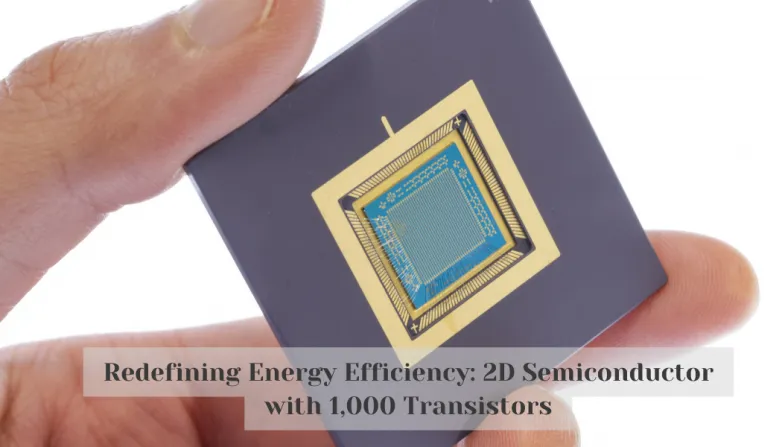Redefining Energy Efficiency: 2D Semiconductor with 1,000 Transistors
- Unlock new possibilities in data-processing with the revolutionary two-dimensional molybdenum disulfide processor from the EPFL LANES team. A processor dedicated to vector-matrix multiplication, perfect for AI accelerators and more, with the potential to reduce energy consumption and revolutionize data-processing.

In a paper published in the journal Nature Electronics, researchers from EPFL's School of Engineering in the Laboratory of Nanoscale Electronics and Structures (LANES) presented a new two-dimensional semiconductor processor with 1,024 elements, the first of its kind. This new type of in-memory processor combines both data processing and storage onto a single device, with the potential to drastically reduce energy consumption and revolutionize data processing. Through the use of molybdenum disulfide (MoS2) as the semiconductor material, the LANES team was able to develop a processor dedicated to vector-matrix multiplication, a fundamental operation used in digital signal processing and AI.
The paper also highlights the potential of this development for Europe, where the European Chips Act is actively pushing for greater competitiveness and resilience in semiconductor technologies. This development opens the door to developing non-von Neumann processing architectures for AI accelerators and other emerging applications, allowing the continent to create a strong global position in the future.
What Potential Does the New Two-Dimensional Processor Have for Europe?
- MoS2 as a semiconductor material allows for a processor dedicated to vector-matrix multiplication, a fundamental operation used in digital signal processing and AI
- Ability to drastically reduce energy consumption
- Opens the door to developing non-von Neumann processing architectures for AI accelerators and other emerging applications
- Can help Europe create a strong global position in the future by increasing competitiveness and resilience in semiconductor technologies
- Can revolutionize data processing by combining both data processing and storage onto a single device
Also read

